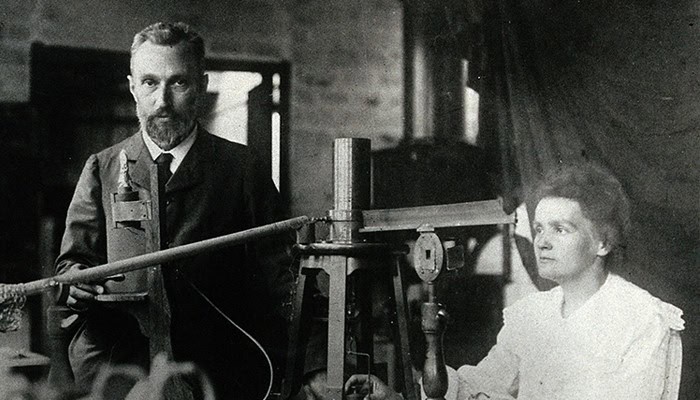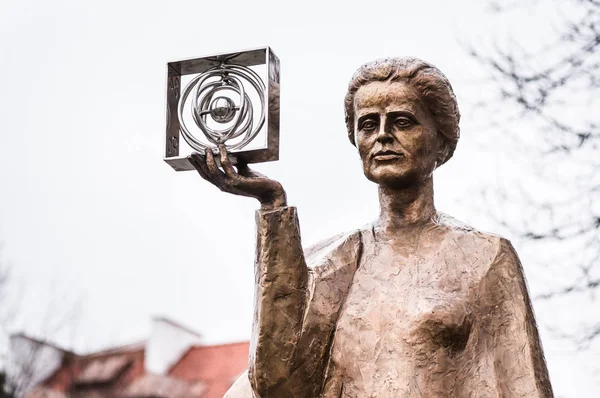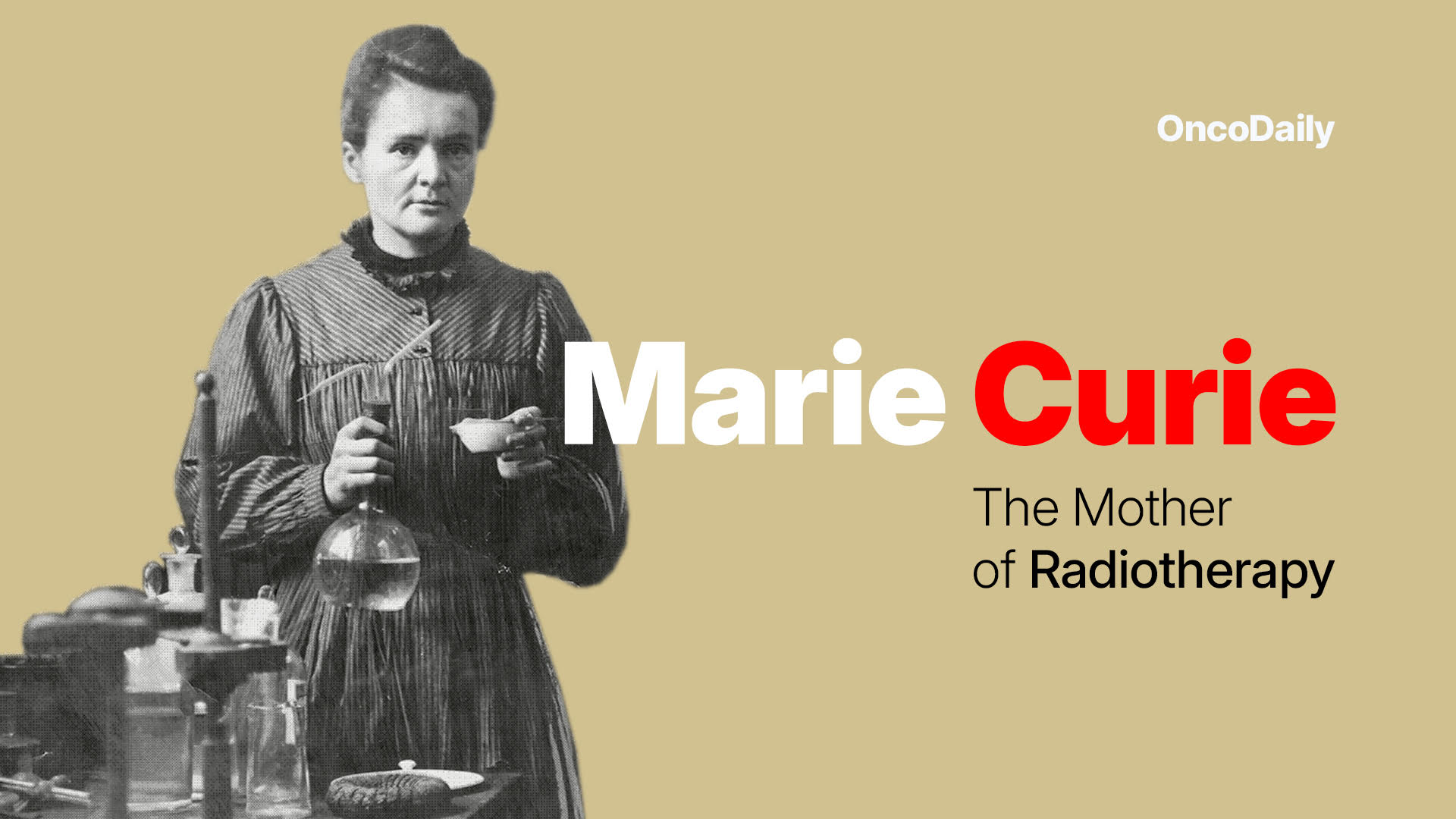“When radium was discovered, no one knew that it would prove useful in hospitals. The work was one of pure science.”
Marie Curie, born on November 7, 1867, was a pioneering physicist and chemist whose groundbreaking work laid the foundation for modern science and medicine. Celebrated on her birthday, her legacy extends far beyond her time as she was the first woman to win a Nobel Prize and remains the only person awarded Nobel Prizes in two different scientific fields.

Marie Curie with her husband Pierre Curie.
Her monumental contributions began with pioneering the study of radioactivity, a term she herself coined, and include the discovery of the radioactive elements polonium and radium alongside her husband Pierre Curie. These discoveries revolutionized the understanding of atomic physics and profoundly influenced the medical field by enabling the development of radiation-based cancer treatments, establishing the roots of radiation oncology. Her work exemplifies scientific brilliance and perseverance, continuing to inspire generations of scientists and medical professionals around the world.
Early Life and Education of Marie Curie
Marie Curie was born on November 7, 1867, in Warsaw, Poland, then part of the Russian Empire, as Maria Salomea Skłodowska. She was the youngest child of well-educated parents: her father taught mathematics and physics, and her mother ran a prestigious girls’ school. Despite this supportive background, Marie faced considerable obstacles, including her gender and Polish nationality under Russian rule, which limited educational opportunities for women. She attended a girls’ gymnasium and later studied at the clandestine Flying University in Warsaw, which aimed to preserve Polish culture and offered education to women.
Financial constraints compelled Marie to work as a governess while supporting her sister Bronisława’s medical education in Paris. In 1891, she moved to Paris herself to attend the Sorbonne University, where she pursued degrees in physics and mathematics. The move marked a turning point in her academic journey, leading to her groundbreaking scientific career in the field of radioactivity.
Discovery of Radioactivity
Henri Becquerel discovered spontaneous radioactivity in 1896 while experimenting with uranium salts. He found that uranium emitted invisible rays that could penetrate black paper and darken photographic plates, even without exposure to sunlight. This unexpected discovery revealed that radiation came from the uranium atoms themselves, not from an external energy source. Building on Becquerel’s work, Marie Curie extensively investigated radioactivity beyond uranium, coining the term “radioactivity” to describe the phenomenon.
Together with her husband Pierre Curie, she discovered two new radioactive elements in 1898 polonium (named after her native Poland) and radium. Their work firmly established radioactivity as a fundamental atomic property. In recognition, Marie Curie was awarded the Nobel Prize in Physics in 1903, shared with Pierre Curie and Henri Becquerel, for their collective groundbreaking research on spontaneous radiation.

Photo: Depositphotos
Isolation and Study of Radium
Marie Curie successfully isolated pure radium in 1910 after years of painstaking work processing tons of pitchblende ore. This breakthrough allowed her to study radium’s unique radioactive properties in detail. Radium’s ability to continuously emit radiation fascinated scientists and opened new frontiers in both physics and medicine.
Her isolation of radium was not just a scientific achievement but also enabled practical applications in cancer treatment and medical diagnostics. In recognition of her extraordinary contributions, Marie Curie was awarded the Nobel Prize in Chemistry in 1911, becoming the first person to win Nobel Prizes in two different scientific disciplines. Her work laid the scientific foundation for the use of radioactive elements in medicine and helped establish the field of radiation oncology.
“Radium is not to enrich any one. It is an element; it is for all people.”
Legacy and Influence of Marie Curie
Marie Curie played a crucial and pioneering role in the founding of radiation oncology through her groundbreaking discoveries and innovations. After isolating radium in 1910, she recognized that radium’s radioactive properties could be harnessed to target and destroy malignant cells, thus providing a novel and powerful means to treat cancer. This realization led to the early development of radium therapy, or “curietherapy,” which involved using radium in various forms (such as tubes, needles, and containers) to deliver localized radiation directly to cancerous tumors.
In the early 1900s, radium therapy showed success primarily for treating superficial cancers like skin and breast cancer, as well as accessible internal tumors, especially gynecological cancers. This marked the beginning of radiotherapy as a dedicated medical treatment modality. Importantly, Curie’s work extended beyond laboratory research to practical medical applications: during World War I, she created mobile X-ray units famously known as “Little Curies” that could be transported to front lines for battlefield diagnostics. These units not only revolutionized medical imaging for wartime injuries but also established the clinical value of radiation technology.
The innovations brought forth by Marie Curie laid a firm foundation for modern radiation oncology, establishing principles of using controlled exposure to radioactive materials for both diagnosis and treatment of cancer. Furthermore, her legacy includes the founding of institutions such as the Curie Institute in Paris, which became centers of excellence in cancer research and clinical radiotherapy. Through these efforts, she transformed cancer care, impacting millions by enabling early diagnosis and more effective, targeted treatment of tumors that continue to evolve with modern radiotherapy techniques today.
Marie Curie’s damage to her own health from prolonged exposure to radiation underscores both her personal sacrifice and the initial unawareness of radiation risks. Despite this, her pioneering work remains a cornerstone of oncology, embodying the transition from discovery to impactful therapeutic use of radioactive elements for the benefit of humanity.

Photo: Depositphotos Statue of Marie Curie in Warsaw
Marie Curie’s legacy and influence in science and medicine are profound and enduring. After the tragic death of her husband Pierre in 1906, she was appointed as the first female professor at the University of Paris (Sorbonne), making history as the first woman to hold such a prestigious academic position in France. This appointment not only honored her remarkable scientific contributions but also symbolized a breakthrough for women in science and higher education. Marie Curie was a mentor to many future scientists, fostering a spirit of rigorous inquiry and innovation.
Her scientific legacy continued robustly through her family, particularly her daughter Irène Joliot-Curie, who herself won a Nobel Prize for work on artificial radioactivity, and Irène’s husband Frédéric Joliot-Curie. This family legacy contributed significantly to the advancement of nuclear science and medicine.
“A scientist in his laboratory is not a mere technician: he is also a child confronting natural phenomena that impress him as though they were fairy tales.”
Marie Curie’s influence extends far beyond her immediate family. She pioneered the use of radiation in medicine, particularly in oncology and radiology, revolutionizing cancer diagnosis and treatment with the development of radium therapy. Her work established radiation oncology as a critical field, saving countless lives through targeted cancer therapies and diagnostic imaging.
Moreover, Marie Curie’s life and career helped break gender barriers, inspiring generations of women scientists worldwide. Her dedication, perseverance, and altruism evident in her refusal to patent radium isolation to allow free scientific use—cemented her pioneering status in science and medicine. Institutions she helped found, like the Curie Institute, continue to be leading centers of cancer research and treatment globally, embodying her lasting impact on public health and oncology.
You Can Also Read Varian: Radiotherapy Giant by OncoDaily

Written by Aharon Tsaturyan, MD, Editor at OncoDaily Intelligence Unit.
